You’re grasping a vintage palm pilot,
When a Hoverfly lands! And while it
Licks salt and tastes ya
Record echinacea
With palm sweat, palm tears, palm pilot

|
||||
|
Last week, the Chicago Botanic Garden ended their annual orchid show and opened up all their plants for purchase to garden members and employees! Alex and I ventured to the sale at 10 am last Thursday to find a long, looping line that weaved throughout the Regenstein center. We waited about 25 minutes to reach the beginning of the line. We were not prepared for the carnage we were about to witness. Elbows were flying, emotions were high, plants were abundant. There was a good deal on tiny Phalaenopsis, 2 for $10. At one point, a man tried to purloin Alex’s beautiful orchid while she went to return a shopping basket, and I had to protect the plant from danger. Alex described the ordeal as “a mad house” and “chaos”, and I definitely agree with that assessment. 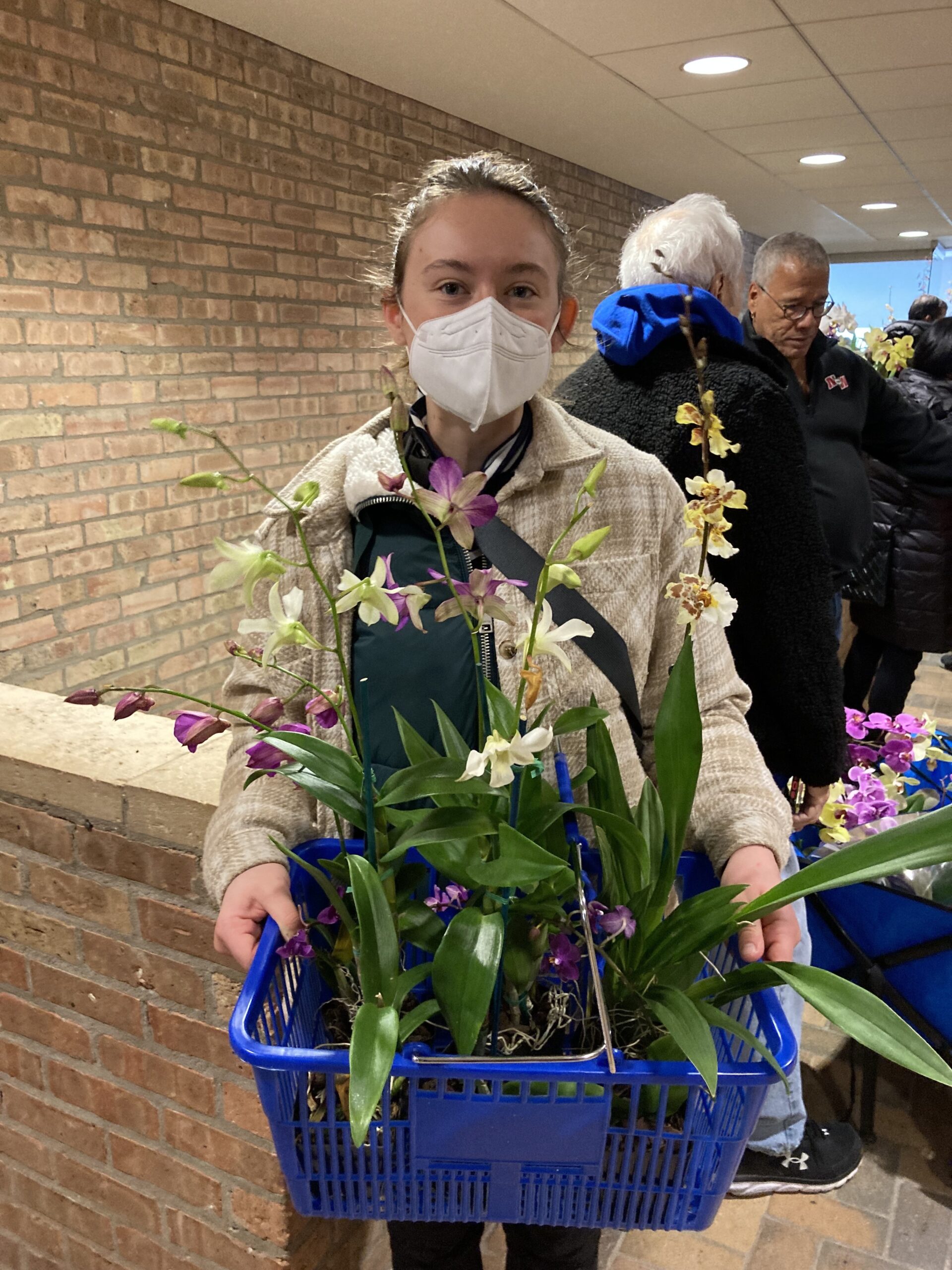 Nobody tell Jared, but I walked (or, more like ran) out of there with 7 orchids (some to give to family and friends, and one or two for myself). Alex ended up with 3 stunning orchids as well! The line to check out was slightly calmer, though equally as long as the line to enter the sale. Many people were becoming agitated, having to wait in line and carry their heavy load of orchids. Alex noticed that each cash register had a number (as you can see in the photo below) and each number was a different font! How silly! 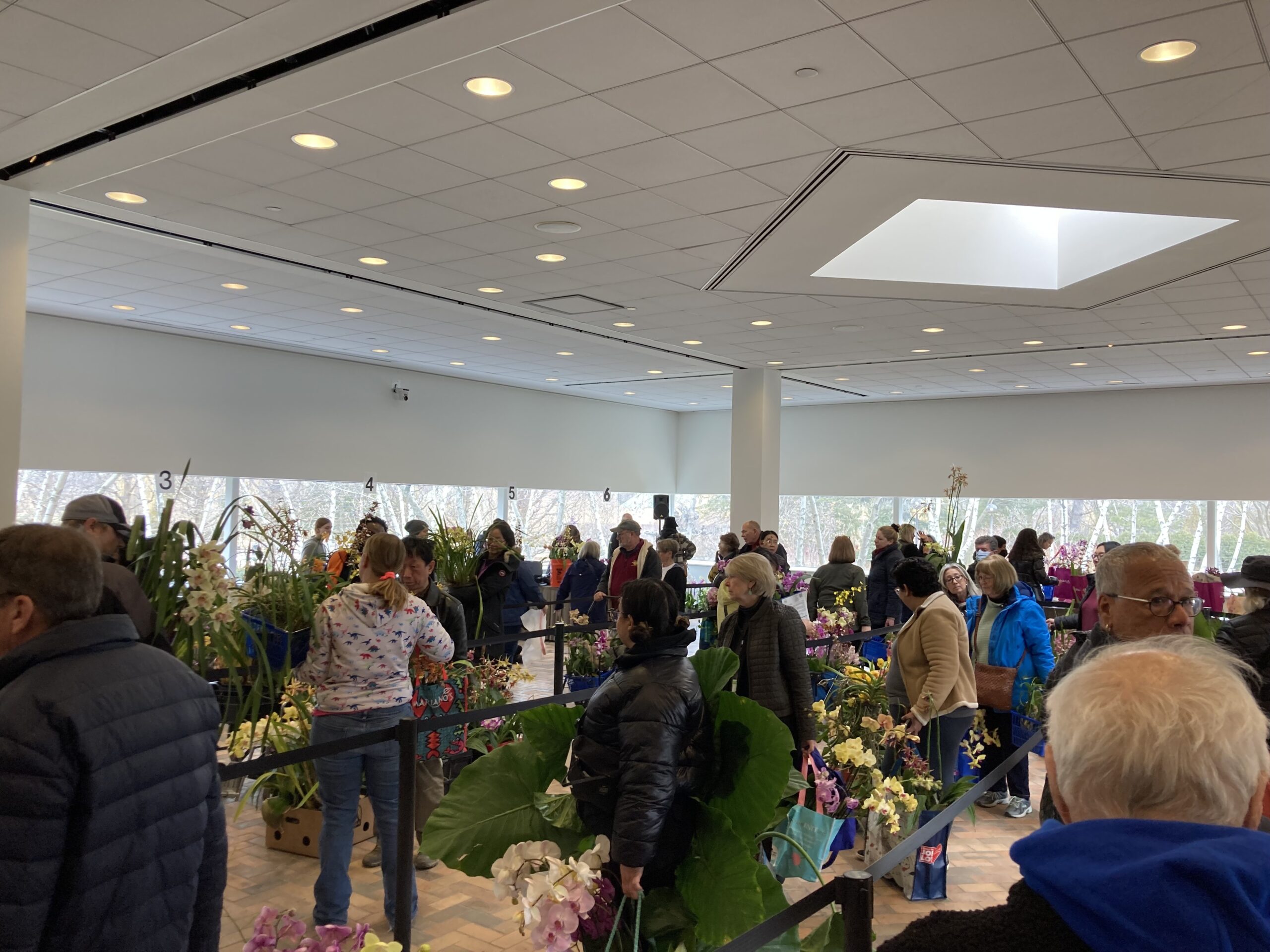 For anyone wanting to brave the orchid sale in future years, my only advice is to prepare for battle. Last week, we drove to MN in the middle of the week for our last chance for field work before the snow. Jared and Wyatt stayed behind to take care of the Lake Forest College students who are doing a project in the lab on Wednesdays. Our goal in MN was to plant seeds for the seed addition project, an experiment measuring the effects of prescribed fire on seedling germination and emergence in Echinacea. For the study, we established 4-meter-long transects at 36 sites across the Echinacea Project study area, for a total of 84 transects. Each transect is divided into 4 segments, and this fall, we planted one of those meter-long segments with either 1 or 2 packets containing 50 seeds each. Since we know how many seeds we planted (we know exactly how many because Wyatt x-rayed them!), we can record how many seedlings emerge in the spring and calculate accurate germination rates.  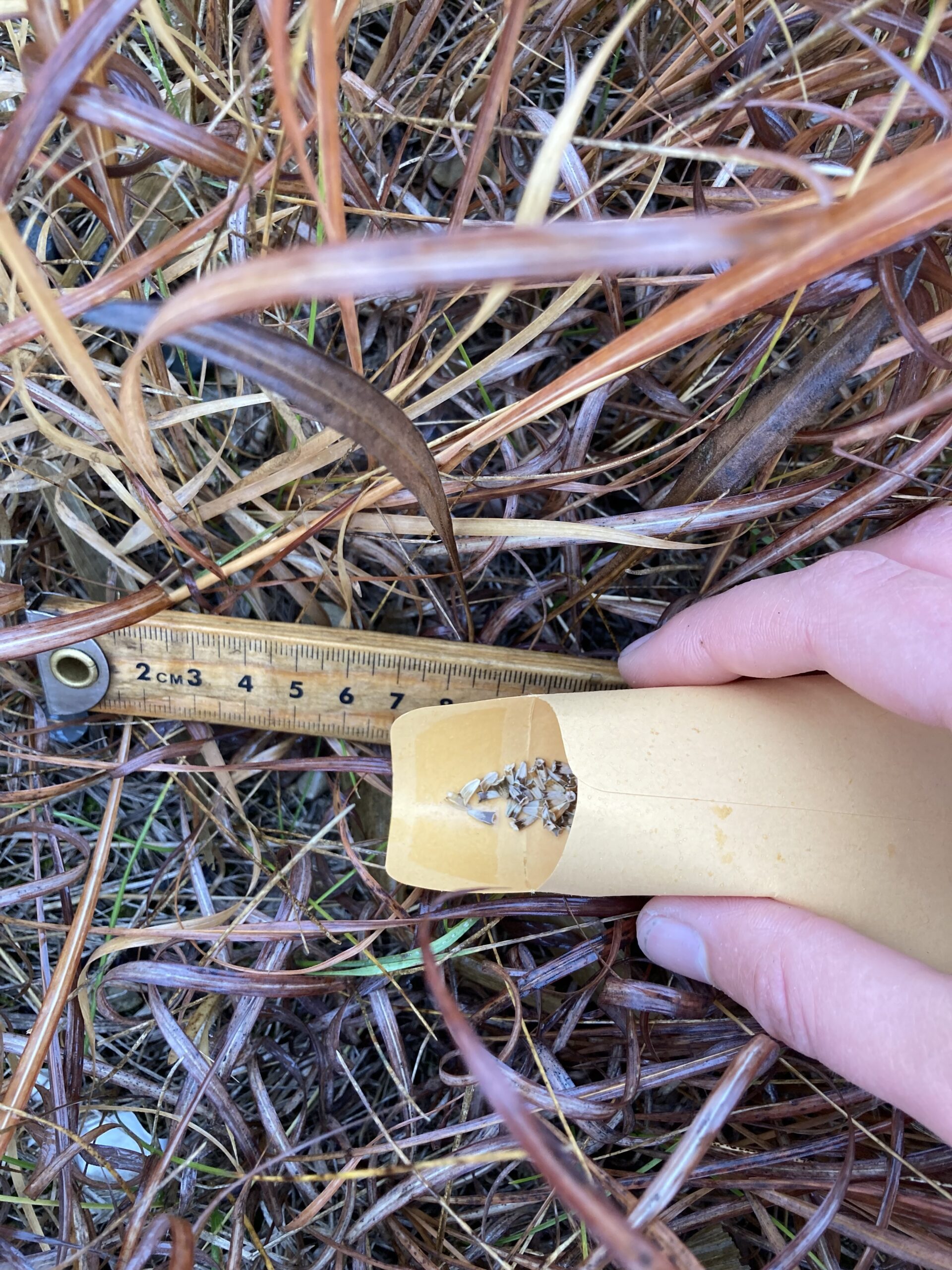 Our goal on Wednesday was to plant all 84 transects before sunset at 4:50 pm. November 9th, 2022 dawned cold and rainy. Stuart, Lindsey, and I started the day at Tower and Nice Island to do a practice run together. We soon learned that the drizzle would make planting seeds difficult. The achenes stuck to everything: the envelope, the grass, the meterstick, and our fingers when we tried to remove the achenes from the meterstick. Nevertheless, we persisted. After sprinkling seeds along each transect, we carefully checked meterstick to make sure there were no renegade achenes. We finished 59 transects in the morning and regrouped to put on dry clothes and feast on Jean’s delicious hummus for lunch. I greatly regretted that I had no rain pants. After lunch, the sky was still overcast, but the rain stopped, which made it much easier to sprinkle seeds. This year, we added several new locations, and we needed the GPS to map them out: Torgeson (east and west), Hutchings (east and west), Fern, and Bengston. Unfortunately, Taylor the GPS hadn’t been used since the end of September, so I waited for three excruciatingly slow Windows updates while Lindsey and Stuart headed out to plant more transects. Finally, at 2 pm, Taylor finally finished updating, and we met at Hutchings to install the new transects. At Hutchings East, both of the initial transect locations were in dips between hills, so we moved them both 20 m east. Next, at Hutchings West, one transect started on a rock, so we moved the transect slightly north. This was not an auspicious start to the GPS portion of the afternoon, and we had only 2 hours of light left. Lindsey and I raced off to Torgeson, the most distant site. I used the GPS to flag the transects. Lindsey followed with nails and planted the seeds. The transects at Torgeson were on two hills separated by a pond. To reach the second hill, I tried to cut across a patch of mud. It looked stable, but when I took my second step, I felt my boot sink deep into the slurping mud. When I tried to pull my foot out, it wouldn’t budge. I nearly toppled over, but I managed to escape with both boots and the GPS unharmed. Fortunately, the other transects were uneventful. Lindsey and I left Bengston, our second-to-last site, at 4:50 pm, right as the sun was setting. The clouds had trapped a bit of light, so Stuart jumped in the truck, and we headed to our final site: Krusmarks. We needed a flashlight for last two transects, but we finished planting them all! Exhausted, we returned to Hjelm and discovered that Jean had prepared a fabulous dinner: bean soup, homemade bread, pumpkin custard, roasted cinnamon apples, and piping hot gingerbread. It was the best meal I’ve ever eaten. After a successful field season, Team Echinacea has moved back to the lab at the Chicago Botanic Garden. Today, I received a cryptic email from CBG suggesting that there were free items left over from the Roadside Flower Sale, and they were located in Briller Hall, next to the pole barn. Lindsey and I decided to investigate, but we had never heard of Briller Hall or the pole barn. We looked for them on the map of the Garden, but they weren’t listed. We hunted for them on CBG’s website, but there were no search results. Mystified, we asked the volunteers in the lab whether these were real buildings. Neither Allen nor Char had been there, but Allen recognized the names and thought that they were located somewhere nearby. Determined to identify the elusive Roadside Flower Sale, Lindsey and I set off on a quest. First, we walked south from the lab. We passed the greenhouses and spotted the maintenance sheds, but we didn’t find any pole barns there. How hard could it be to hide a barn? we wondered. When we passed some volunteers who were outside weeding, we asked them if they had heard of Briller Hall. They hadn’t, but they directed us to a CBG worker named Javier who was zipping by on his golf cart. Javier exclaimed that he was on his way to the pole barn just then! He invited us to hop on, so we crammed into the golf cart, and he dropped us off at the secret Briller Hall. Inside, we found a wide array of marvelous items ranging from bags of acorns to stacks of staplers to a single wooden shoe. We collected many useful items, some for personal craft projects and some for the lab. Our glorious horde included:
Overall, we were quite pleased with the success of our reconnaissance mission, and the lab now has a grand supply of staplers, colorful cardstock, and thumb tacks. A new ice cream store just opened in Morris! Understandably, Mia, Lindsey, and I had to check out its grand opening. Just Chillin’ serves Bridgeman’s ice cream, and we tried the Wolf Tracks, Carmelicious, and Banana Buttercup. The first two flavors passed our rigorous ice cream evaluations, but Mia described the Banana Buttercup as “interesting” in true Minnesotan fashion, which means it wasn’t very good. 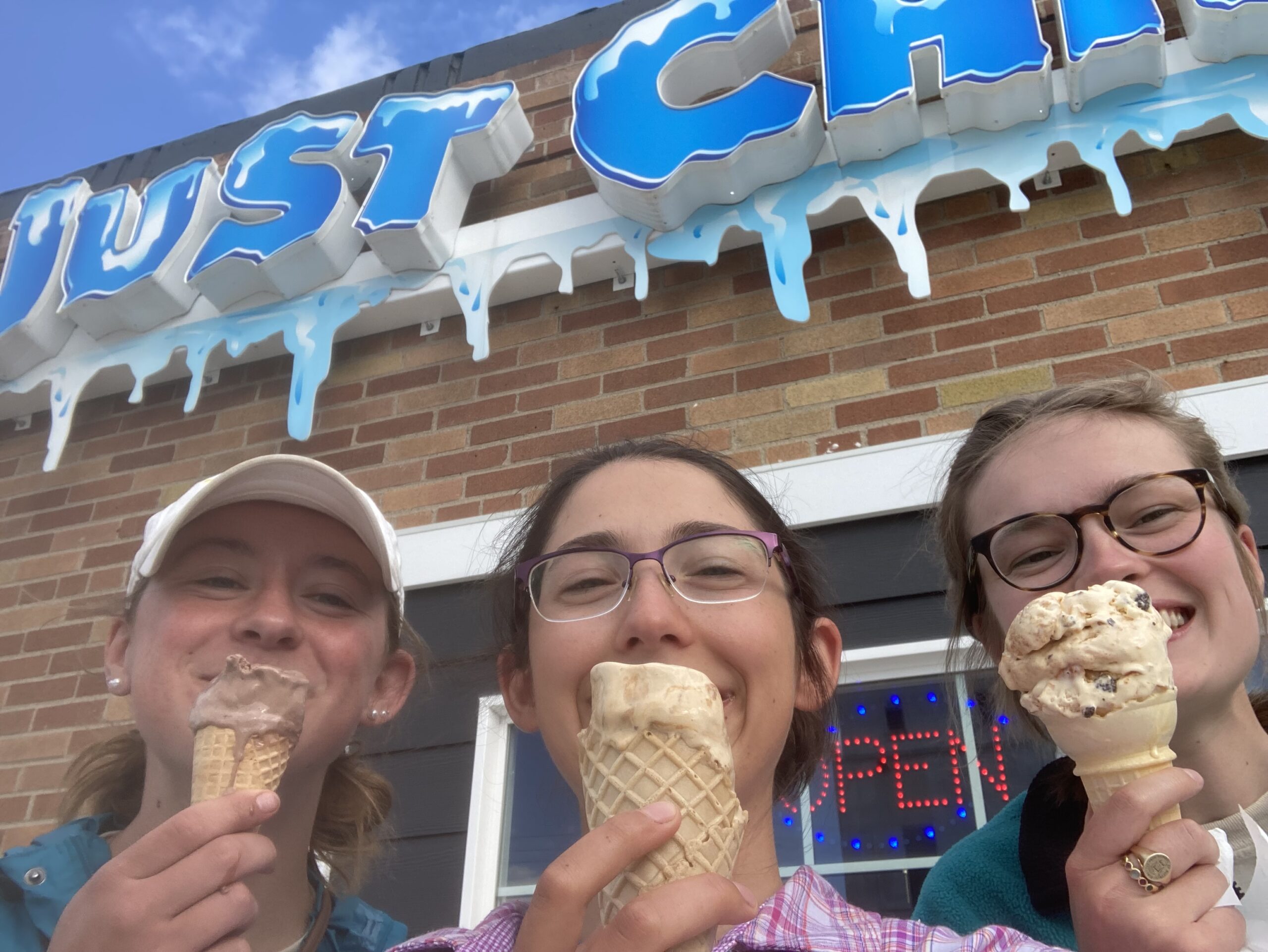 Since Lindsey had never been to Morris, I had to give a full tour of town. We checked out the creepy, derelict florist shop and drove through the University of Minnesota-Morris campus. We did not spot any horses on campus, unfortunately. 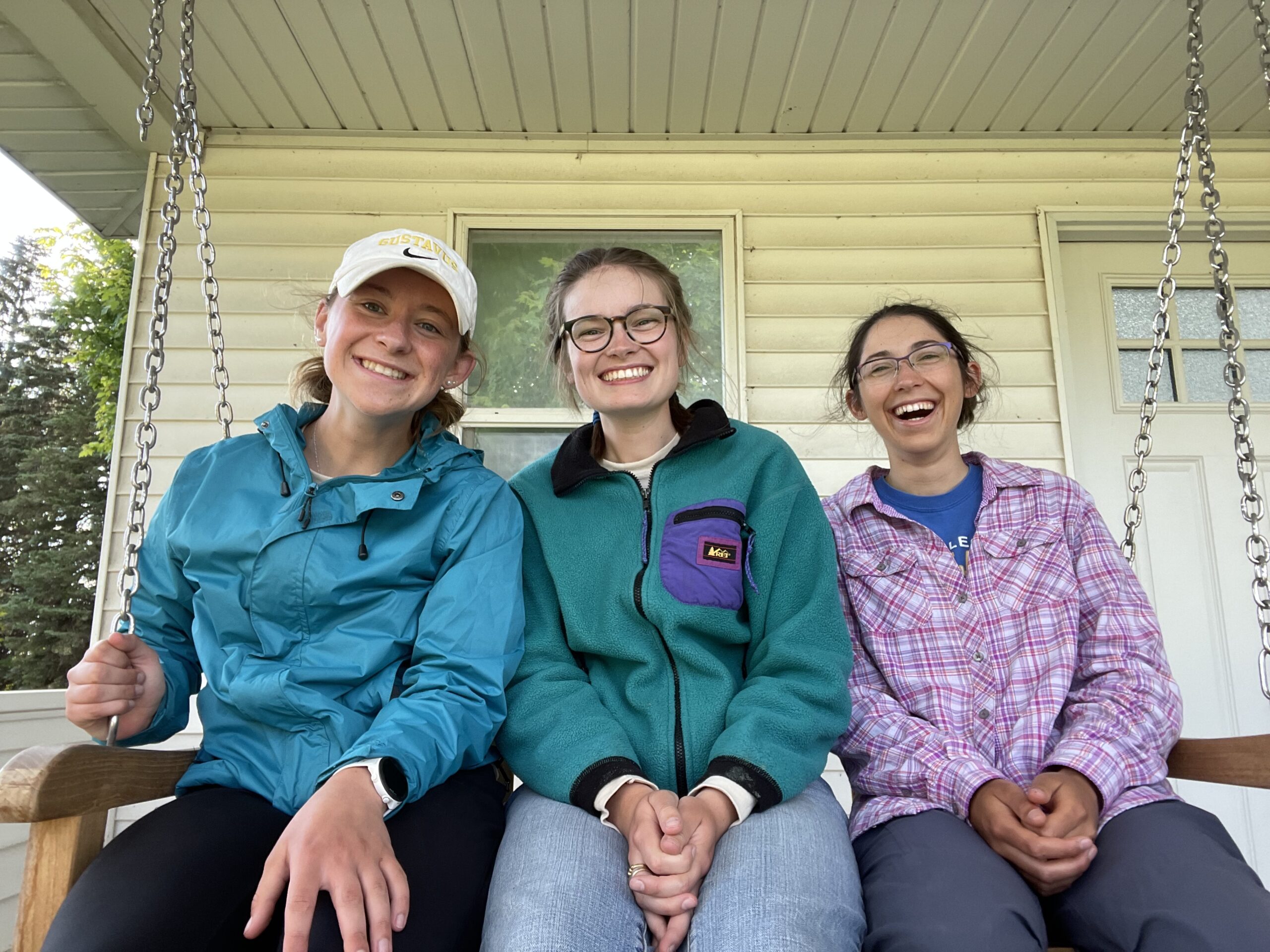 Next, we visited the West Central Research and Outreach Center. We wandered through the horticulture garden and found some suspicious ornamental orange Echinacea, which Mia identified as Echinacea purpurea. We also discovered a porch swing and a croquet game. The most challenging obstacle required us to hit the ball up an incline and through a hollow log. Lindsey was a pro croquet player, but Mia and I struggled, and it took us more tries than we would like to admit. If anyone challenges us to a croquet tournament, I’m placing my bets on Lindsey. 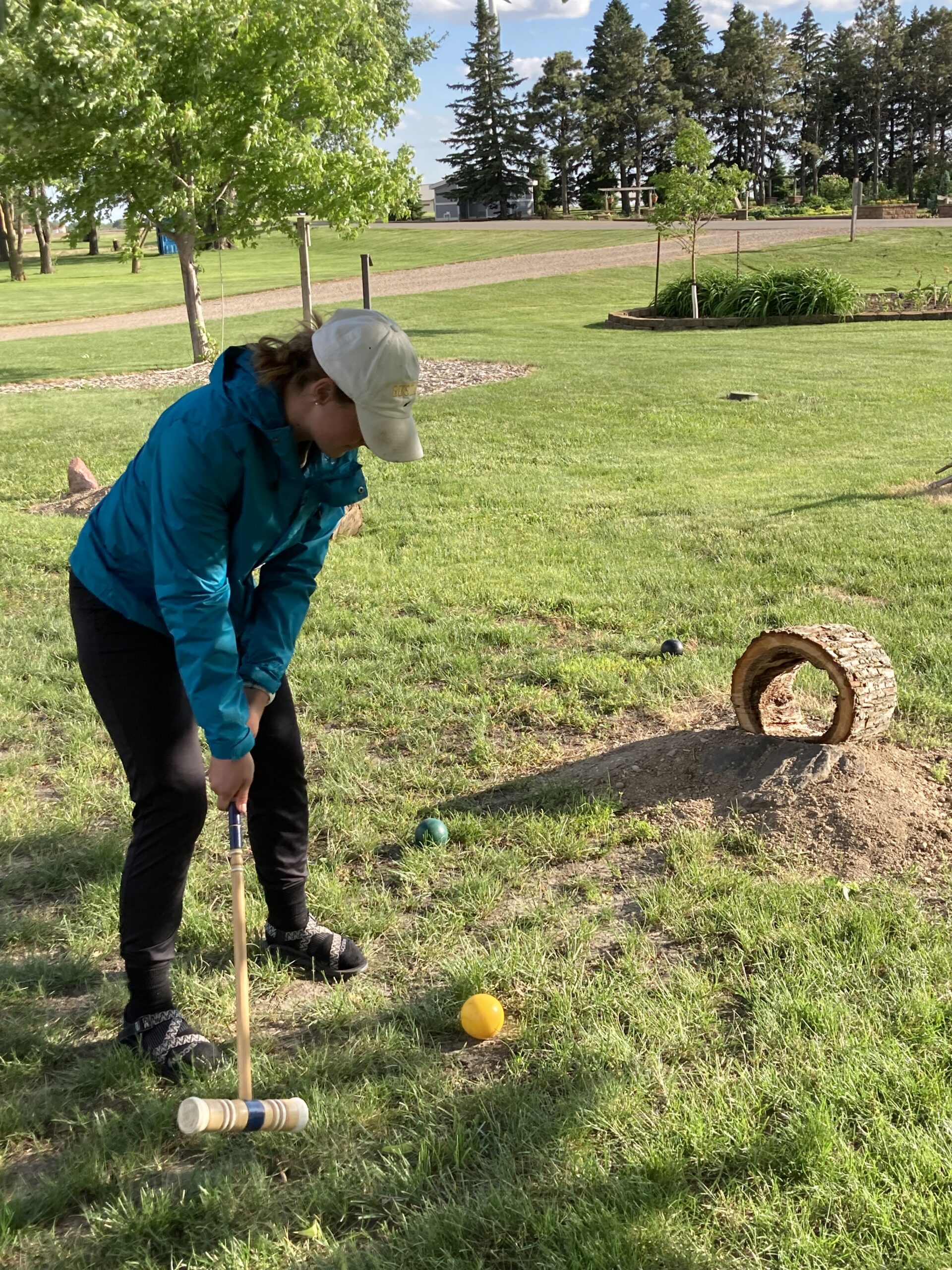 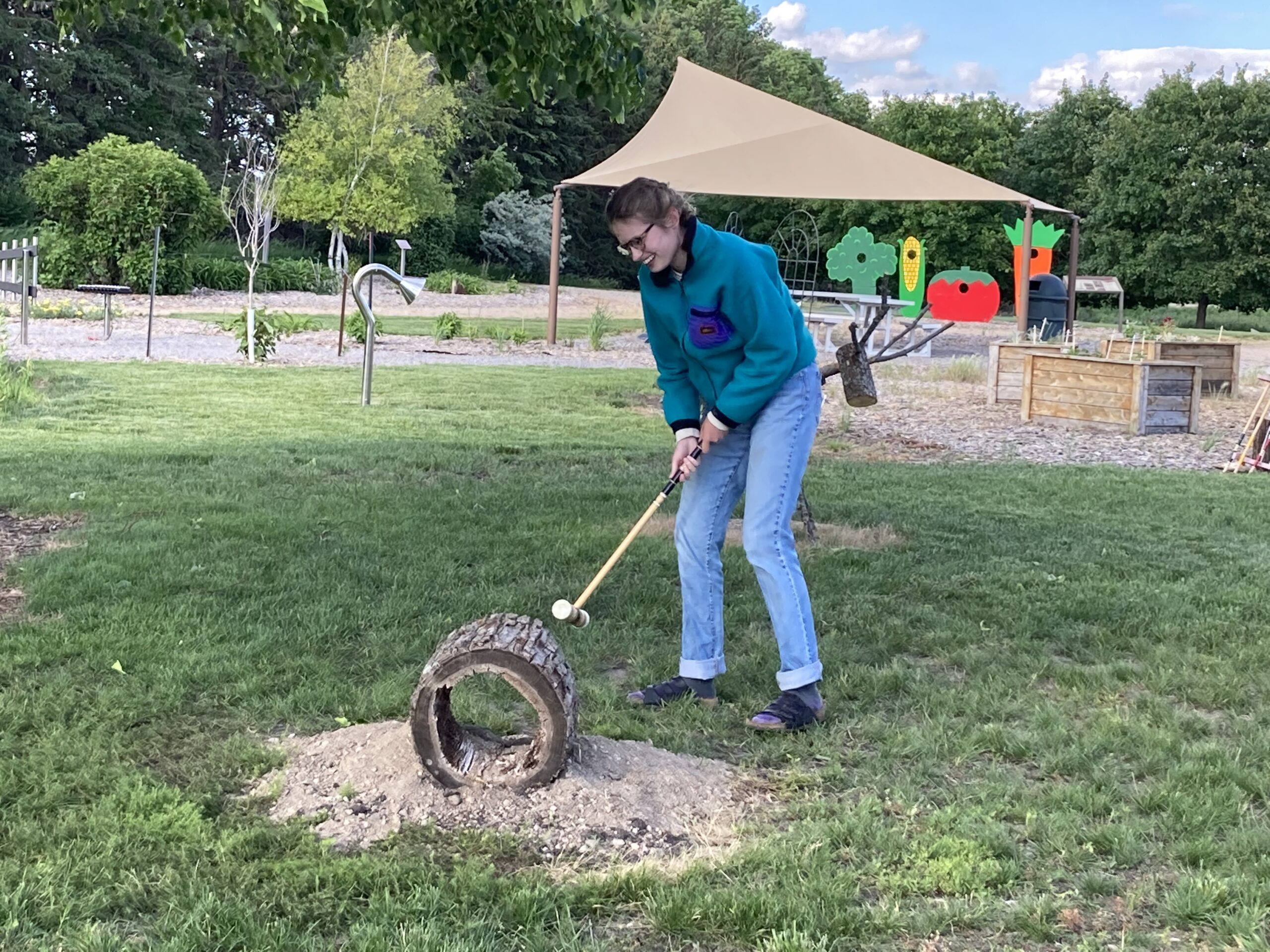  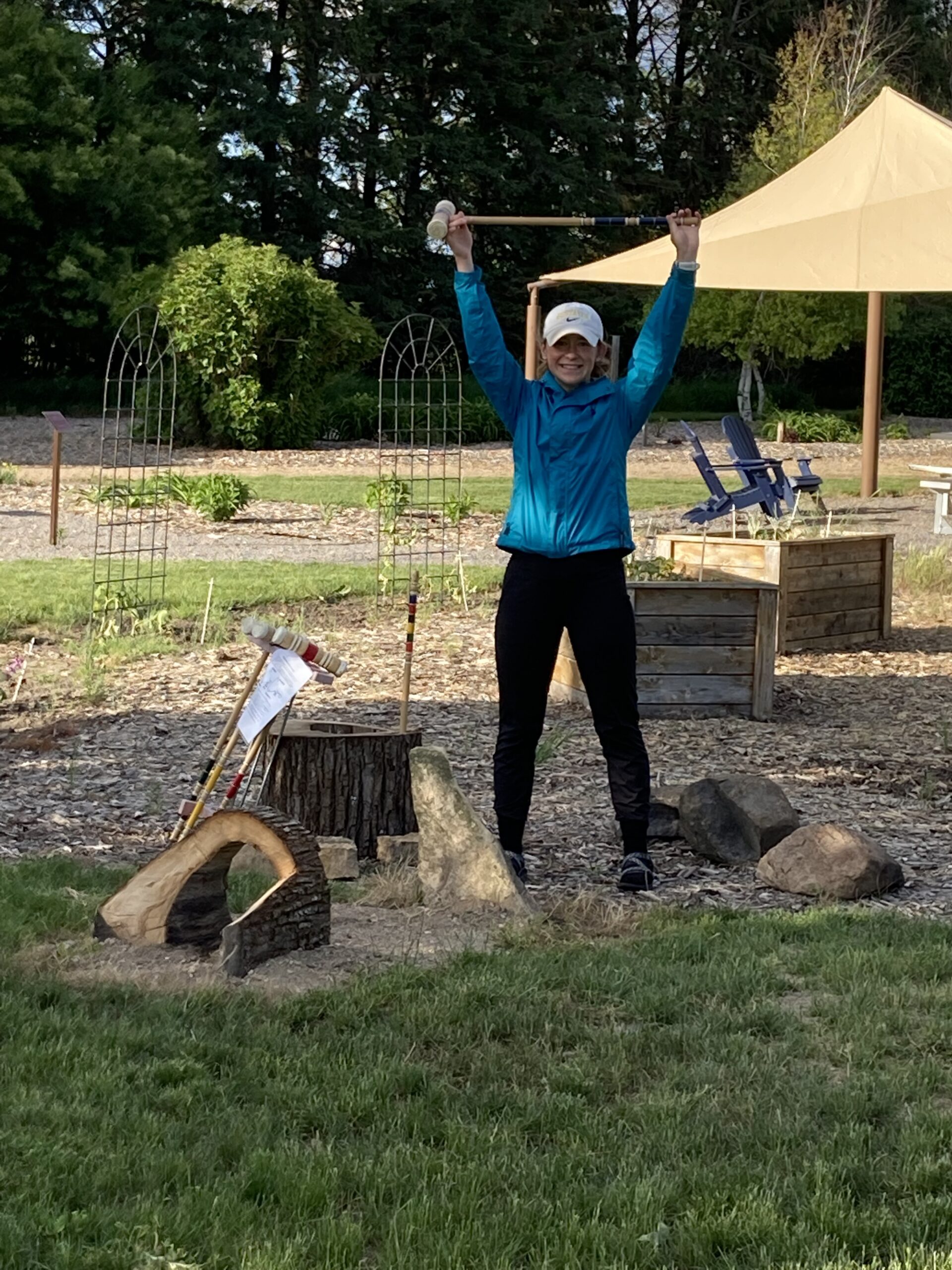
This past week, I paid a visit western Minnesota. It was a very exciting week, complete with -35 degree windchill and 10 inches of gusting snow. On the way back, I stopped by the Swany White Flour Mills in Freeport, MN and picked up a 25-lb bag of rolled oats for Mia. When I returned to Chicago, it was 50 degrees and sunny. Quite the temperature shock!
Lately, I’ve been working on demap. Both the 2020 and 2021 demography and survey records have now been added to demap, and I’m working on reconciling them. My goal is to have the Staffanson data from 2020 and 2021 reconciled and ready to go by Wednesday. I’d better get back to RStudio! Stopped by P8 this morning and snowshoed out to P2. If you like these plots in the summer, the winter offers a new, unique perspective of the beauty of a prairie. The last few days, all vegetation has been covered in hoarfrost so the prairie lacks all color and seems like a black and white movie scene. 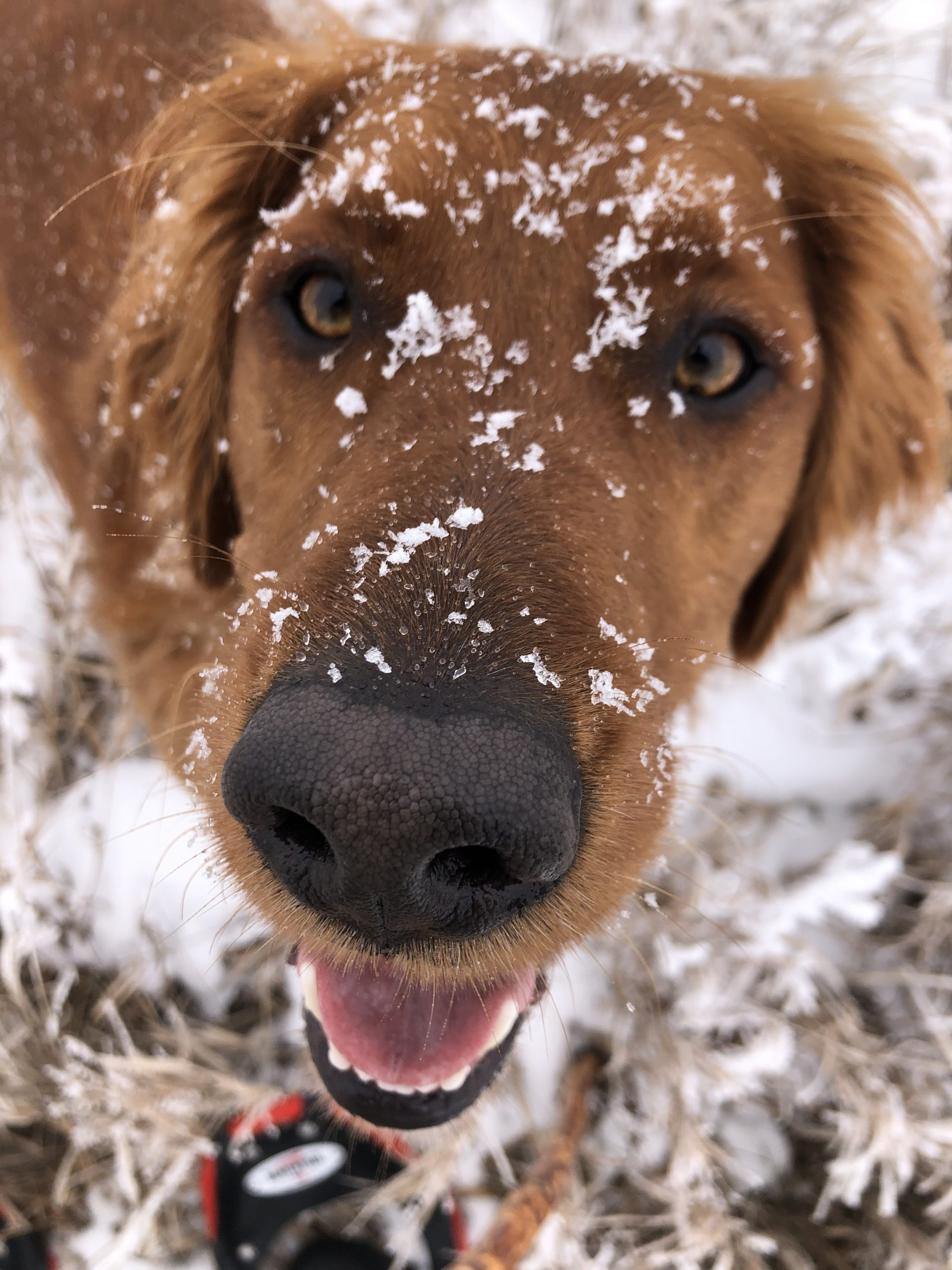  On the south side of the P2, overlooking the plot. 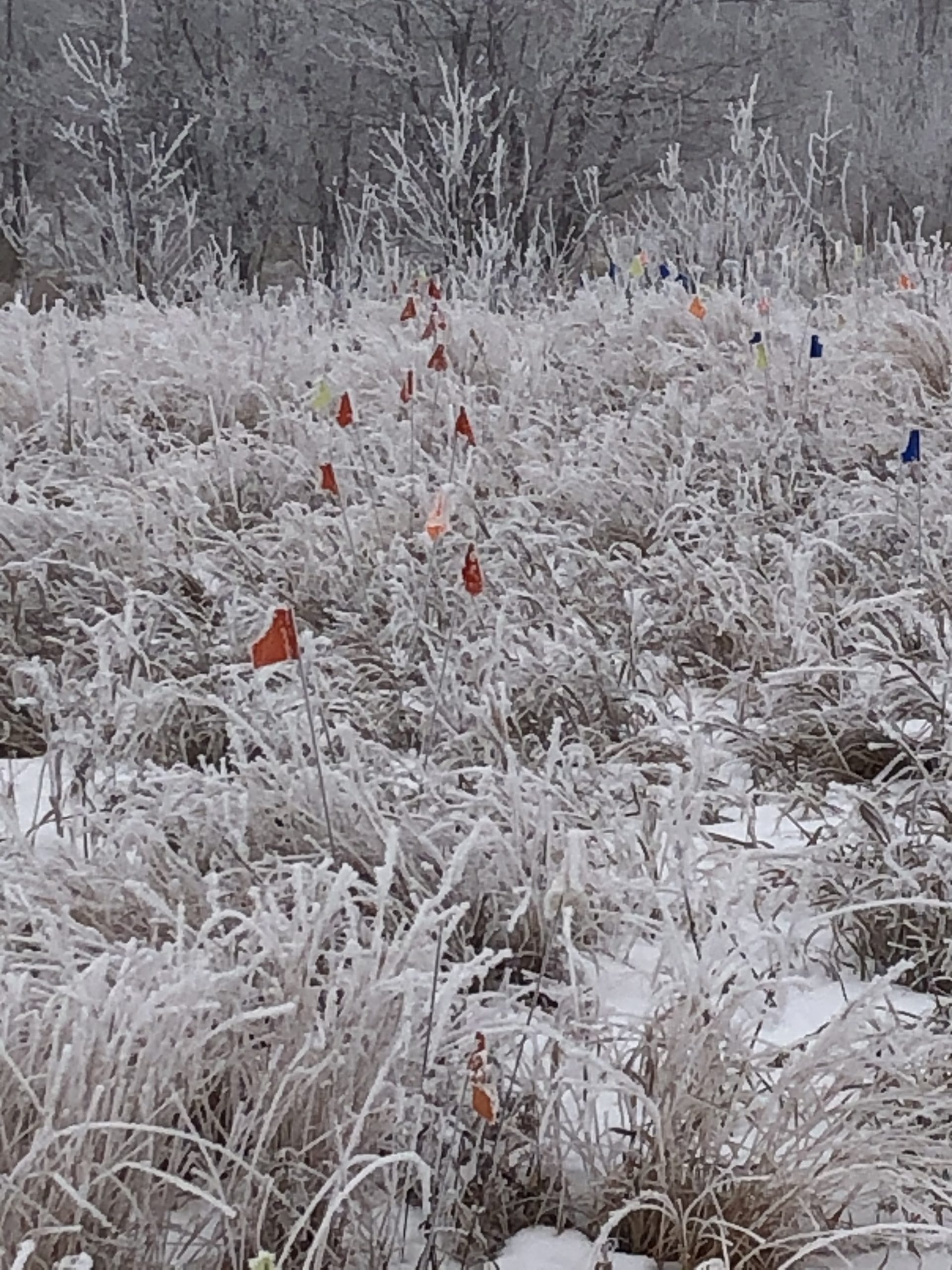 Native long grass prairie is the most endangered ecosystem in North America. Humans are the obvious cause of the dramatic reduction of this system. The human impacts on prairie can be seen in nearly every remnant prairie that the team visits and the Nessman plot is no exception. The Nessman plot is a roadside prairie remnant, with corn on one side, soybeans on the other, and a small patch of remnant prairie in the middle, bisected by a gravel road. A little ways down the road there is a dairy farm once owned by the Nessman family. The prairie that remains consists mostly of invasive alfalfa and European cool-season grasses. These four things: agriculture, pastureland, invasives, and transportation, are the culmination of the main effects that humans can have on the tallgrass prairie.
On Monday June 18th, we went to this prairie remnant and got a glimpse of the impact that humans have had. Upon arrival, we quickly saw the prolific flowing of non-native alfalfa, and the buzz of pollinators all around. The agriculture crept in from both sides, squeezing the heavily invaded remnant prairie closer to the road. Even still, two massive Echinacea plants bud in this highly disturbed prairie site. It made us realize that, even in the most affected sites, native plants still survive and even thrive.
This raises an important concern for every person who interacts with the prairie: how can we have as little impact as possible? Every step we take in the prairie can have deleterious effects on important and rare plants. Here are a few ways that we reduce our impact when we enter the prairie remnants.
Steps and tips for low impact walking in prairie research: -First you need to determine where you are trying to go -Then you plan out a path that involves taking the least number of steps and disturbing the fewest plants. -You need to take large steps and lift your feet up -Once you get to where you are trying to go you should keep your feet planted, don’t shuffle or shimmy – After observing or gathering the intended information, make your way back attempting to follow your original path. Remember to take large steps and lift your feet up. – Finally, once you’ve successfully made it back, receive some well deserved congratulations from your fellow team members! Because as we here say at the Echinacea Project- “It’s not just about the Echinacea!” |
||||
|
© 2025 The Echinacea Project - All Rights Reserved - Log in Powered by WordPress & Atahualpa |
||||